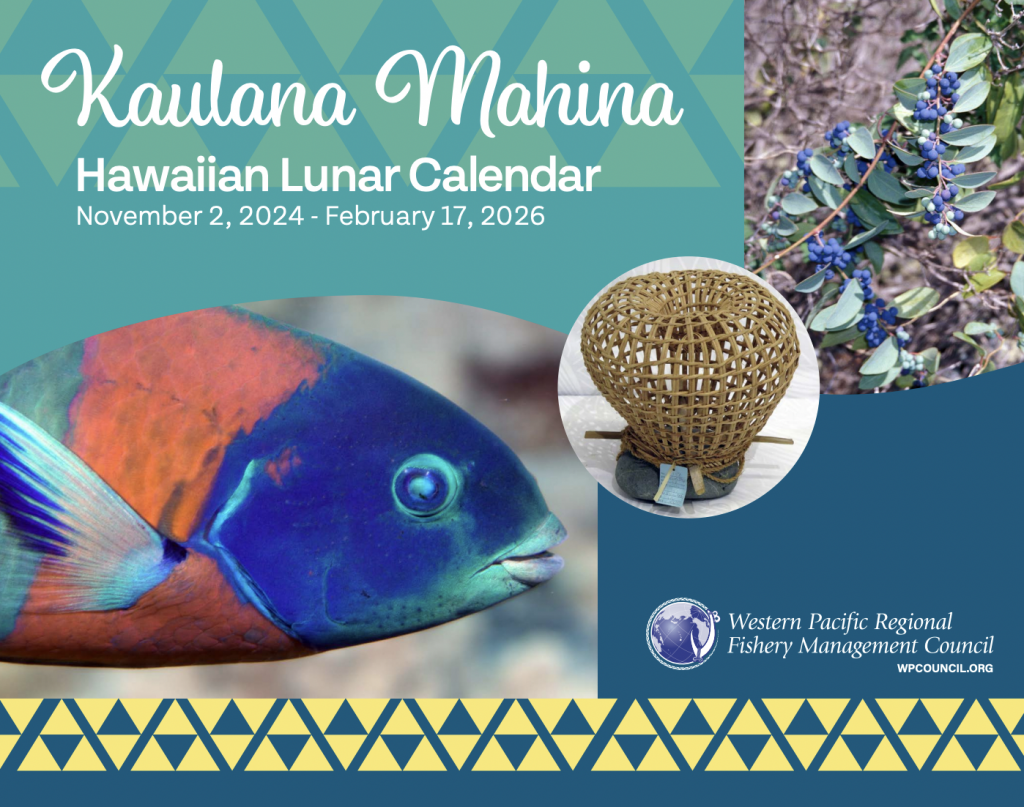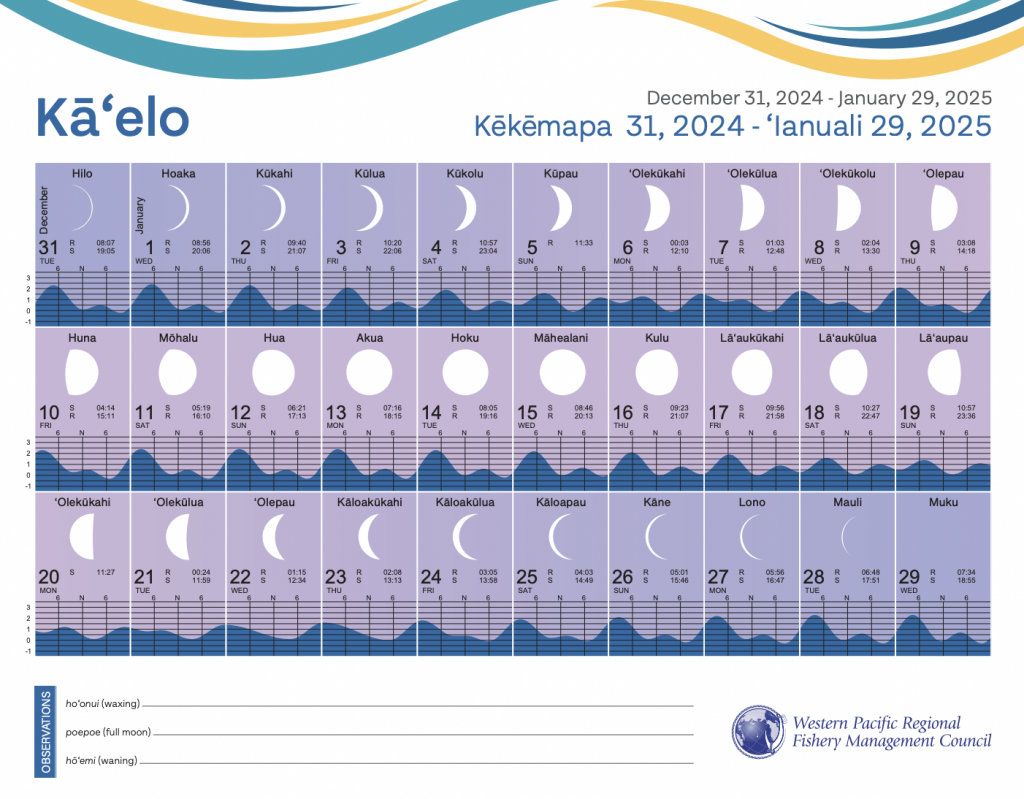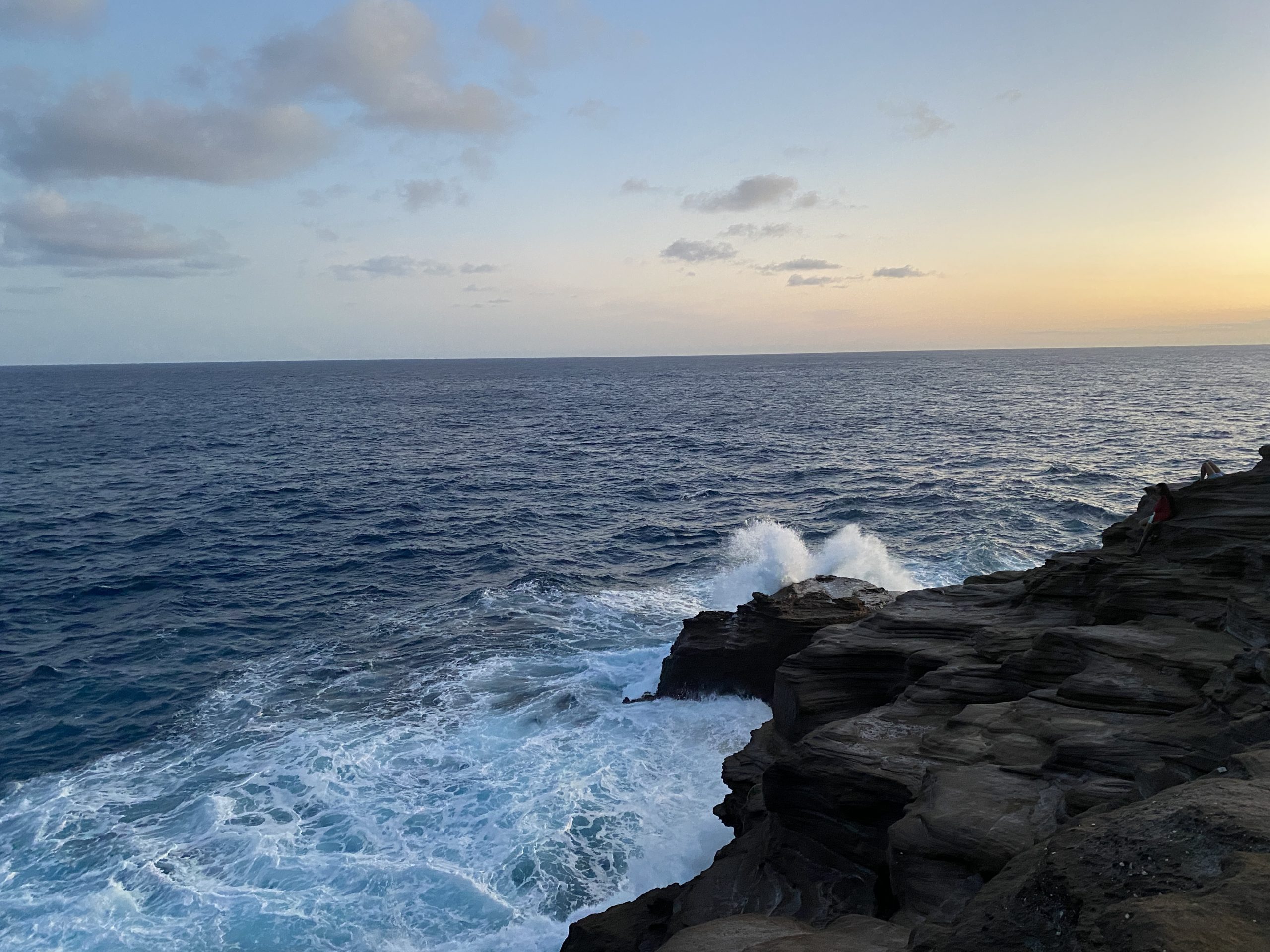
Hawaiian Lunar Calendar
Mahina (Moon)
The moon held immense significance in the lives of the Hawaiian people. Known as Mahina and personified as the goddess Hina, the moon was regarded as family. Through its predictable nature, the moon became a dependable source of information crucial for the survival of countless generations. Just as lunar patterns and cycles were meticulously observed, similar patterns and cycles were discerned in the sky, on land, and among different organisms.
Aligning their practices with lunar phases, the Hawaiians developed planting and fishing strategies that maximized their yields. They recognized the significance of timing, not only for harvesting resources but also for resting fishing grounds or gardens—an awareness that was owed much to the moon. Knowledge of moon names, functions, and rhythms was shared collectively among the Hawaiian people, as the moon represented a benevolent provider of time-tested wisdom and life-sustaining resources. Consequently, the moon received profound reverence, with chants offered in its honor.
To learn more, visit: ‘Imi ‘Ike—Cycles and Hawaiian Traditions and Traditions of Oʻahu: Seasons & Months.
Sources: ‘Imi ‘Ike—Cycles and Hawaiian Traditions. (n.d.). https://ulukau.org/gsdl2.81/cgi-bin/cbimiikecycle?a=d&d=D0.3>=2&e=010off–00-1–0–010—4——-0-1l–11en-50—20—00-3-1-000–0-0-11000
Dennis Kawaharada. (n.d.). Kapiʻolani CC Library LibGuides: Traditions of Oʻahu: Seasons & Months. https://guides.library.kapiolani.hawaii.edu/apdl/oahu/months
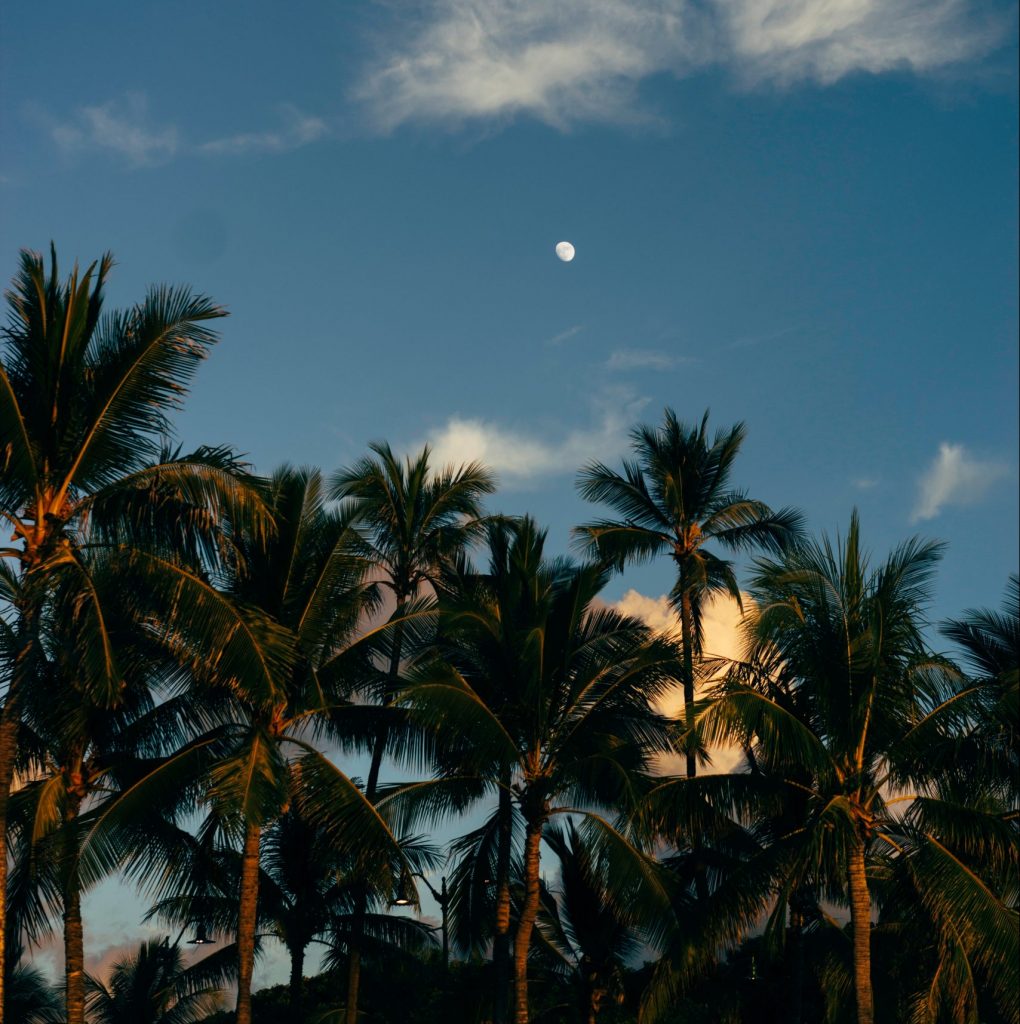
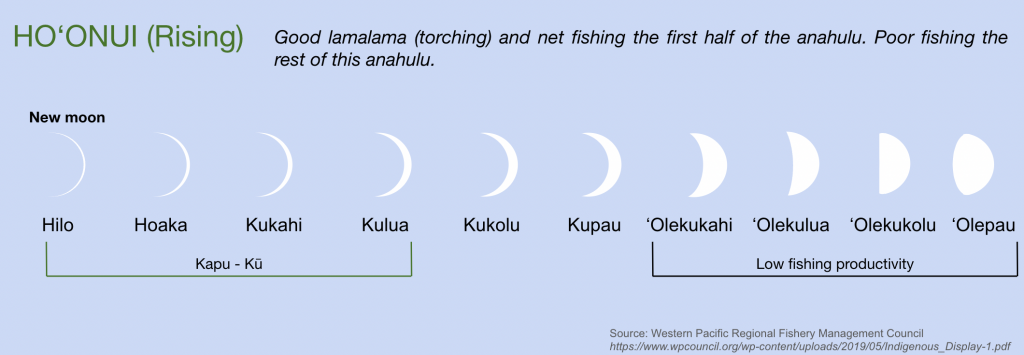
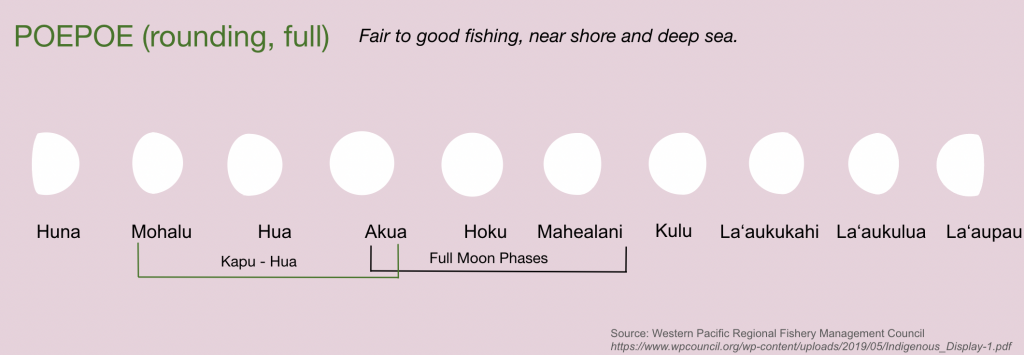
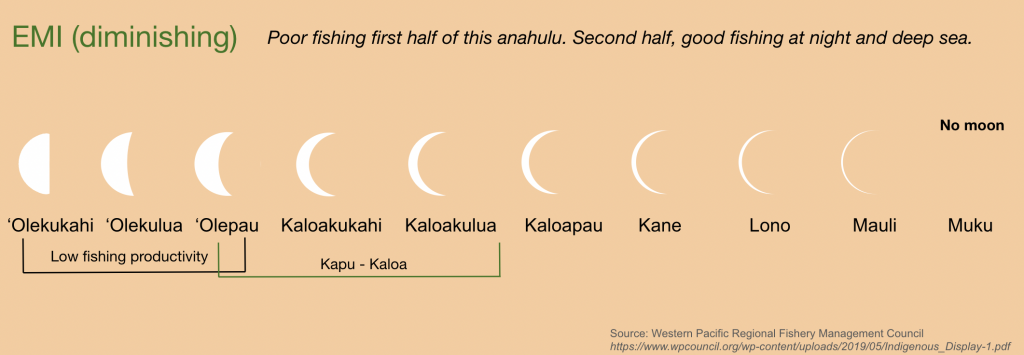
Traditional Pacific Island communities survived by managing natural resources with an understanding of the cycles of scarcity and abundance. All of their food, materials and supplies came from their environment. Kilokilo, a professional class of astronomers and observers, developed the calendars. The moon’s effect on the ecosystem was learned through generations of observing its phases and the environment.
– Communities lived in a harmonious, reciprocal relationship with the environment and considered themselves part of the ecosystem.
– Conflicts were resolved through cultural protocols.
– Enforcement was strict and penalties were severe.
– Management responded to community needs and was conducted by experts with knowledge of the ecosystem, gained through generations of observation and interaction with the resources.
– Custom and tradition controlled the conduct of activities.
– Customary access to resources was by the native land and sea tenure systems and not open access.
– Conservation and resource utilization were linked.
– The culture developed from a long oceanic, island tradition.
Sacred Periods
The Kapu-Ku period honored the god Ku and was spent at
temple. No one planted or fished. After the Kapu-Ku was
abolished in 1819, the people found this period was good for planting and certain kinds of fishing.
The Kapu-Kaloa period was spent worshiping the god
Kanaloa. Certain crops were planted, and certain kinds of
fishing were practiced.
The Kapu-Kane period honored the god Kane, the giver of
life. Fishing and planting were restricted. On Lono, the night after Kane, prayers and observance were given to the god Lono and then food was prepared and offered to both gods. In months without Mauli, this kapu ends on the dawn of Muku.
Unproductive Periods
The ‘Ole periods in the Ho‘onui and Emi anahulu were
unproductive.
Source: Western Pacific Regional Fishery Management Council. (n.d.). Hawaiian Moon Phases and Traditional Resource Management. https://www.wpcouncil.org/wp-content/uploads/2019/05/Indigenous_Display-1.pdf
2025 Hawaiian Lunar Calendar
Source: Western Pacific Regional Fishery Management Council. View the full calendar here
The 12 Lunar Months
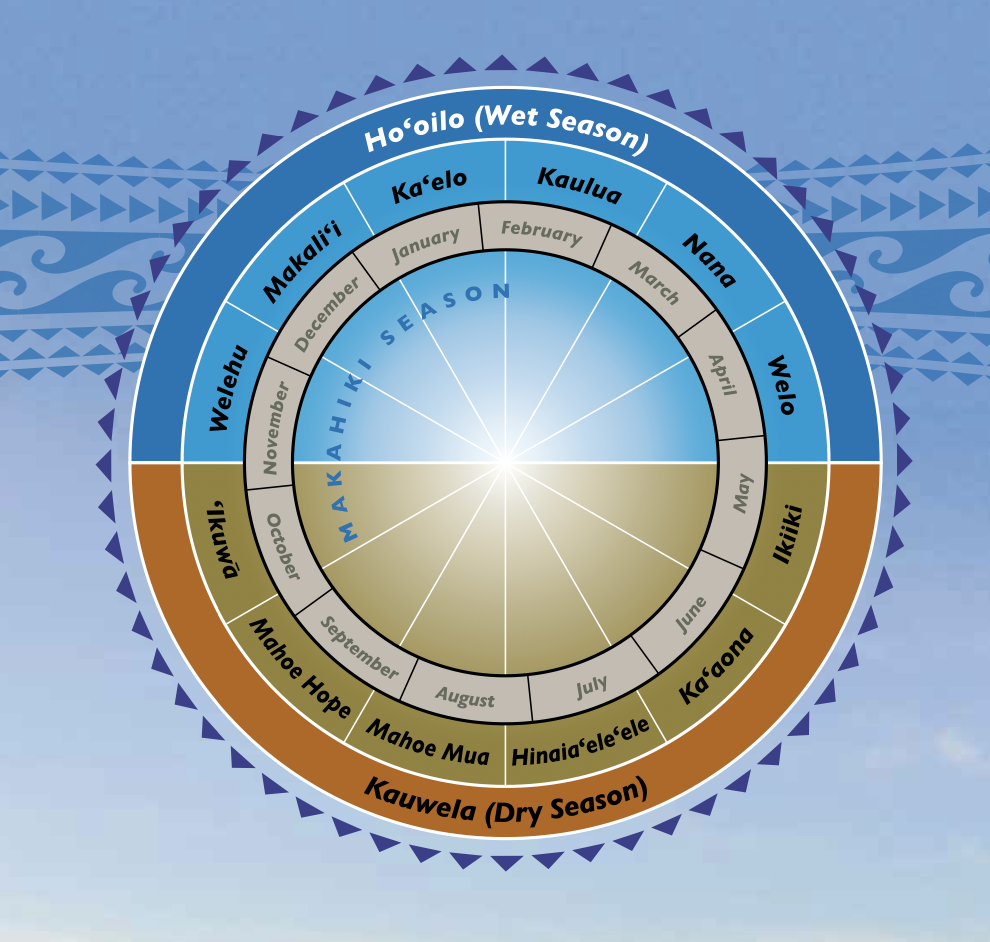
Hawaiian Moon Phases and Traditional Natural Resource Management
Source: Western Pacific Regional Fishery Management Council. (n.d.). Hawaiian Moon Phases and Traditional Resource Management. https://www.wpcouncil.org/wp-content/uploads/2019/05/Indigenous_Display-1.pdf
Ho’oilo (Cool, Wet Season)
Kauwela (Hot, Dry Season)
Welehu (Nov-Dec)
Makali’i (Dec-Jan)
Ka’elo (Jan-Feb)
Kaulua (Feb-Mar)
Nana (Mar-Apr)
Welo (Apr-May)
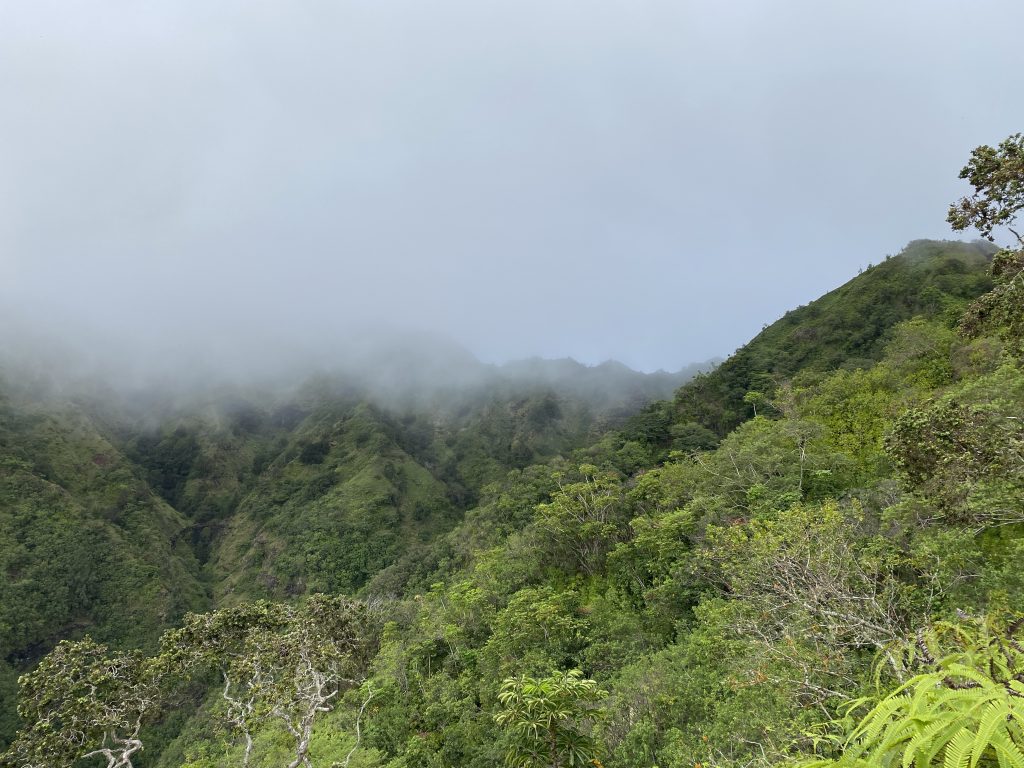
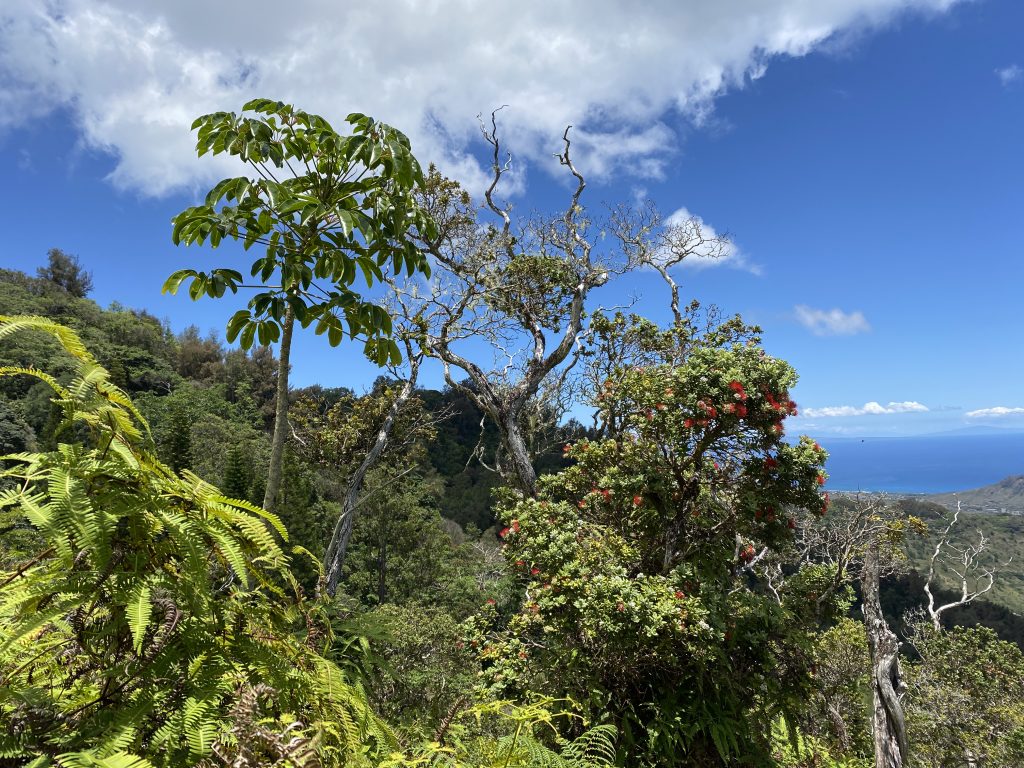
Ikiiki (May-Jun)
Ka’aona (Jun-Jul)
Hilinaehu (Jul-Aug)
Hinaia’ele’ele (Aug-Sep)
Hilinama (Sep-Oct)
‘Ikuwa (Oct-Nov)
Welehu – First new moon after ‘Ikuwa, ending with Muku.
Iki‘iki – First new moon after Welo, ending with Muku.
Makali‘i, the constellation Pleiades rises over the horizon this month. The star Antares rises. Southerly storms and murky water. O‘io spawn nearshore. Uouoa and kole fat. Generally, few fresh fish for the community.
Warm and humid, time to prepare nets for ‘opelu. Malolo are fat and delicious, good fishing for papio, weke, moi, uhu, akule.
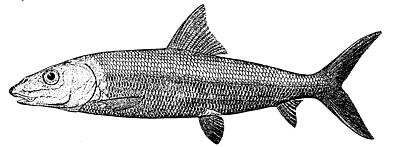
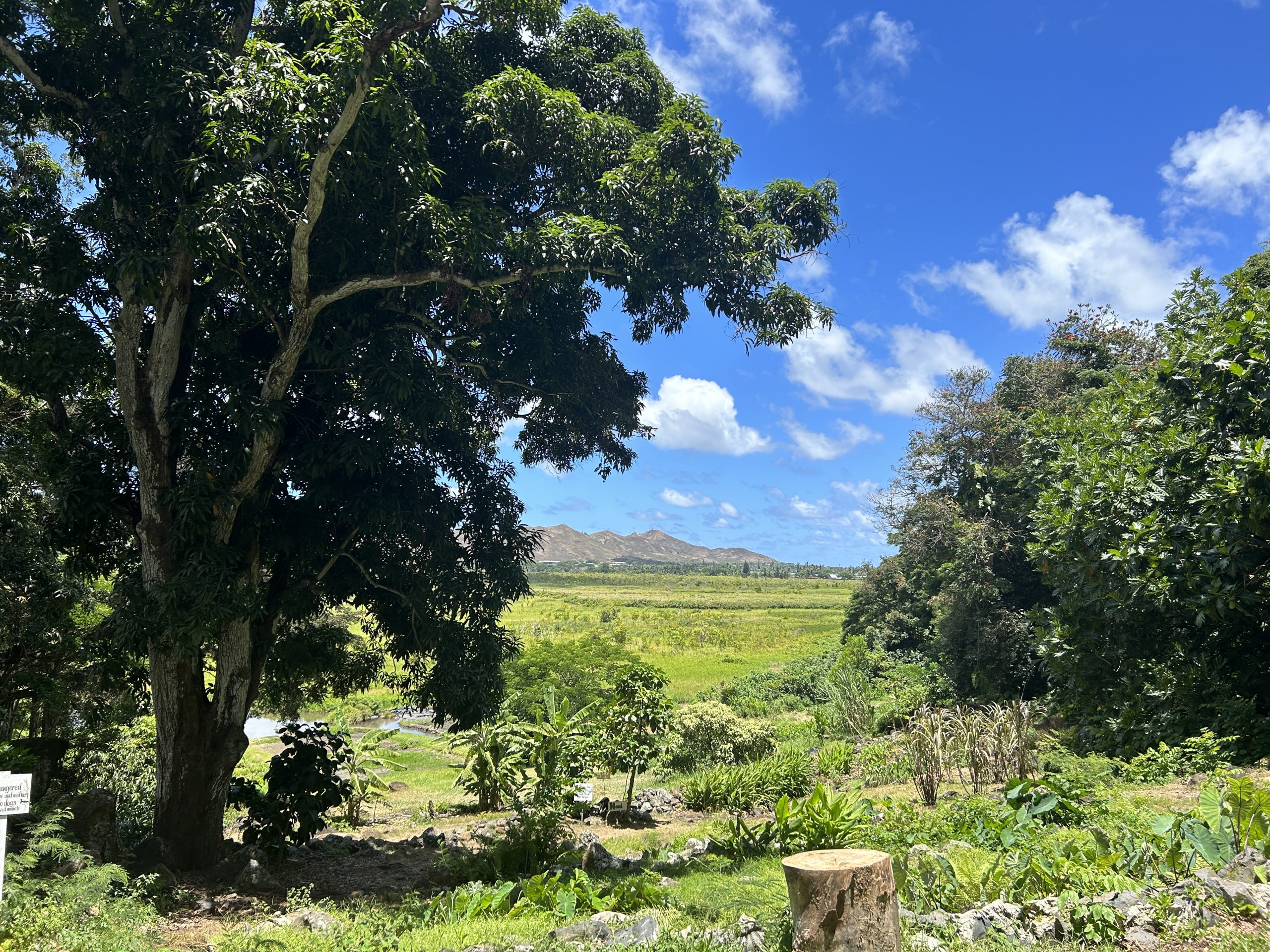
Makali‘i – First new moon after Welehu, ending with Muku.
Ka‘aona – First new moon after ‘Iki‘iki, ending with Muku.
The name of this month is the same as the Hawaiian name for the Pleiades but is also the name of a legendary voyager and navigator. Wet month with Kona winds. Turtles come ashore to lay eggs. Pleiades is high in the sky.
Great harvests of ‘opelu to be salted and dried. Moi spawn after the full moon. Women hand harvest near shore. Men fish at sea. Kapu started on ‘opelu, kapu lifted on aku.
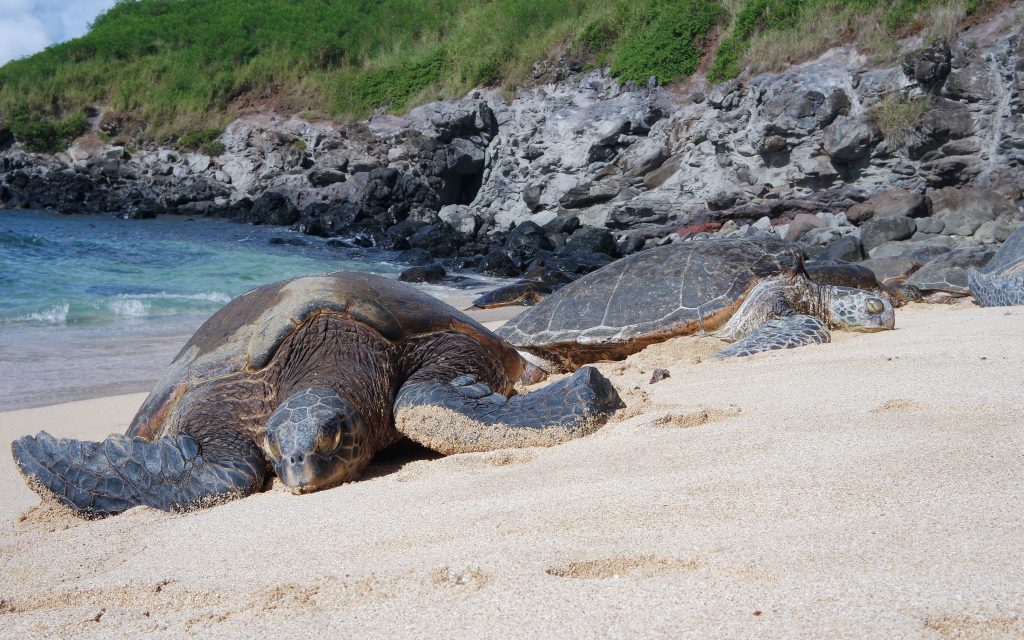

Ka‘elo – First new moon after Makali‘i, ending with Muku.
Hinaia‘ele‘ele – First new moon after Ka‘aona, ending with Muku.
Thunder, lightning, wind and rain. Kapu placed on Aku, kapu on ‘opelu lifted. Amaama run. ‘Ula walk on the reef at night at high tide during Poepoe.
Hot, with the possibility of sudden storms, dark clouds over the mountains. Last seasonal spawning of moi after the full moon. Good fishing for many species. Moili‘i appear nearshore.
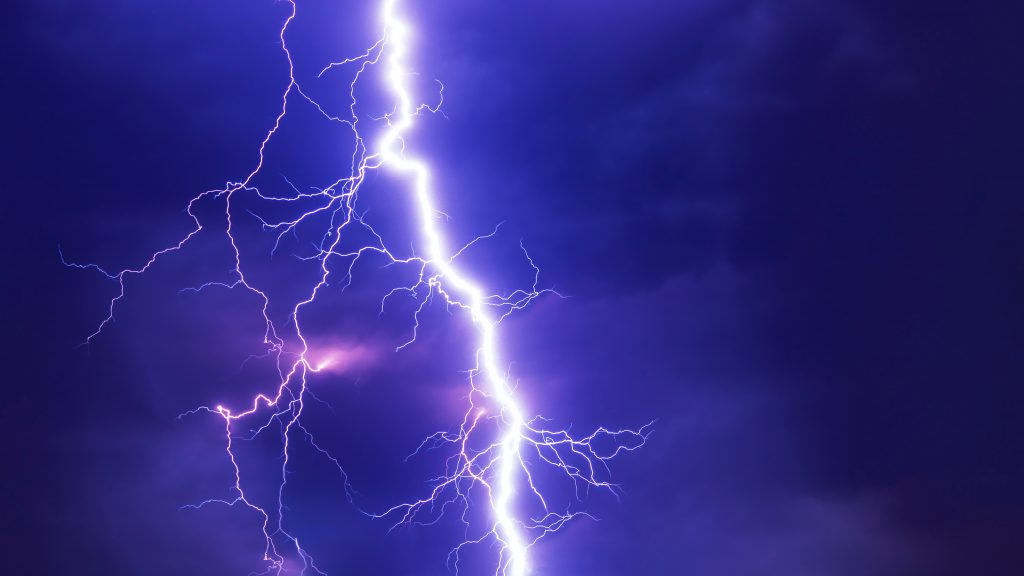
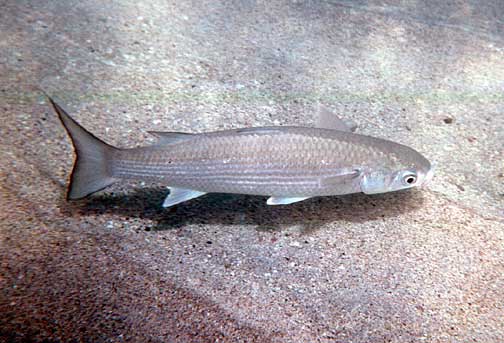
Kaulua – First new moon after Ka‘elo, ending with Muku.
Mahoe Mua – The first twin
Stormy weather, fishing on reef and inshore. Kumu, manini, uouoa, manini, ulua la`uli caught. Malolo nets prepared for Nana.
First new moon after Hinaia‘ele‘ele, ending with Muku. Mahoe mua is the name of one of the twin stars Castor and Pollux, probably Pollux because Pollux rises first. Rain and wind alternate with sun. Seas are rough and alternately smooth. Fishermen alert for storms. Good fishing, maiko and a‘u plentiful.
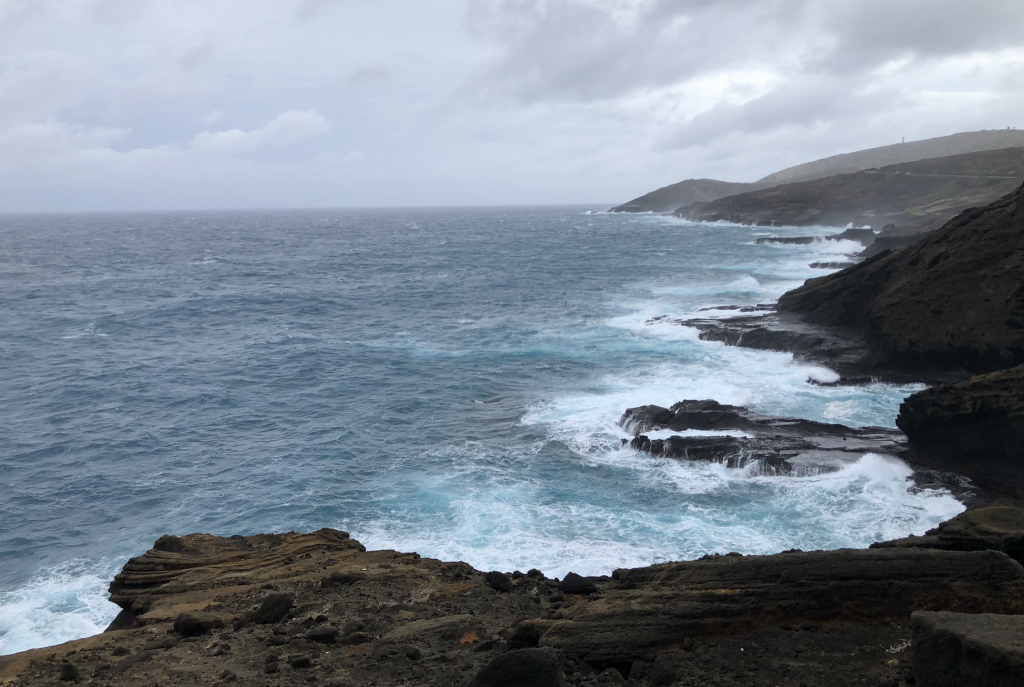
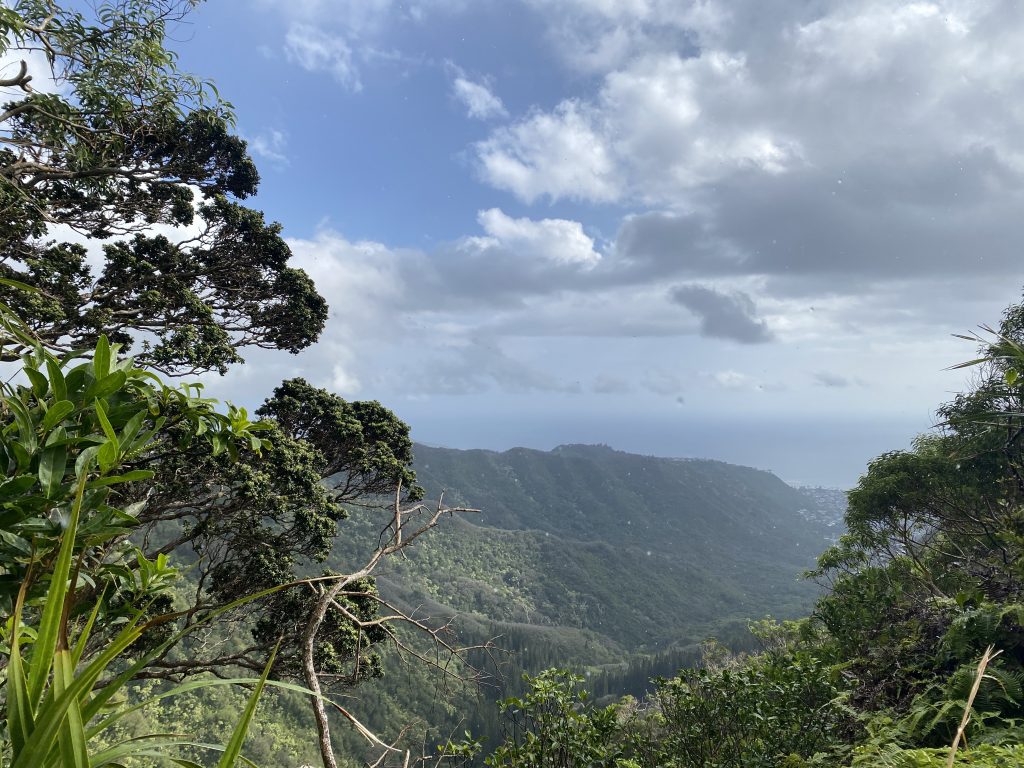
Nana – First new moon after Kaulua, ending with Muku.
Mahoe Hope – The last twin – First new moon after Mahoe Mua, ending with Muku.
Sunny but showery. Malolo caught at sea. A‘u in the deep sea. O‘io, ulua la‘uli, kumu, manini, aweoweo and ‘ula caught.
Increasing showers and rough seas alternating with good days. Excellent deep sea fishing. A‘u run with the full moon. Fishing effort increases to harvest, prepare and store fish for the coming makahiki season and the wet season.
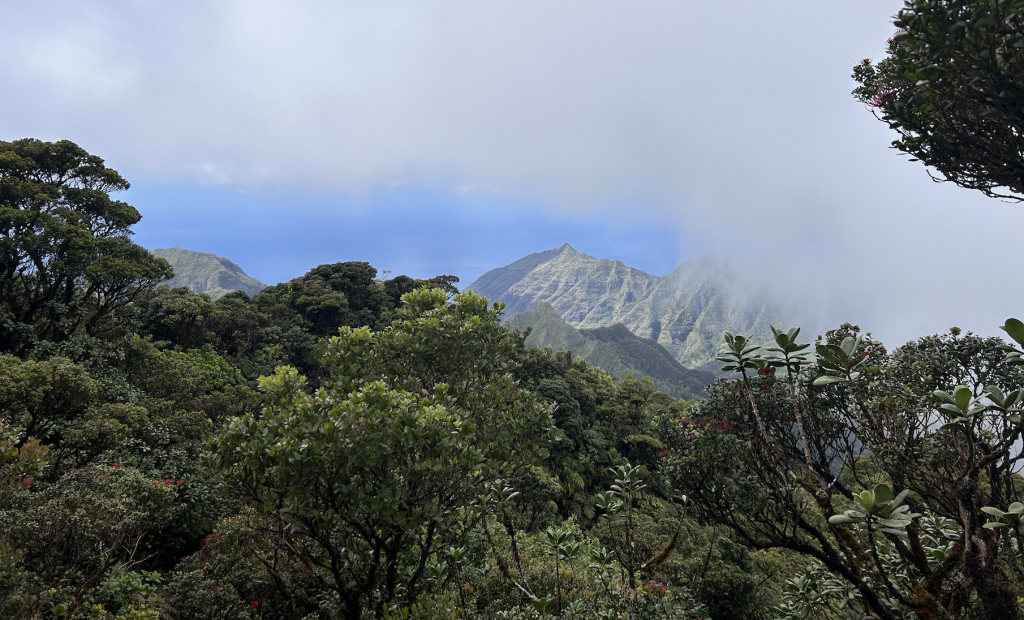
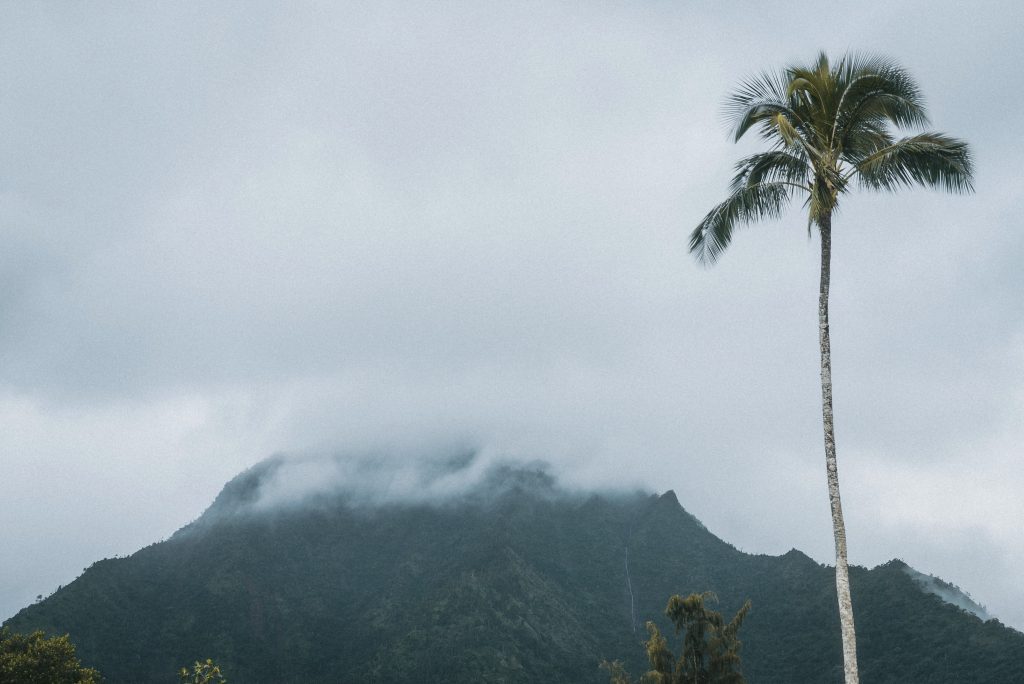
Welo – First new moon after Nana, ending with Muku.
‘Ikuwa (‘Ikua) – First new moon after Mahoe Hope, ending with Muku
End of the wet season. Kawakawa plentiful in the deep sea, A‘u are caught in the deep sea. O‘opu are fat. Akule, weke, moi, and ula caught along with a variety of reef fish.
Makahiki season will begin this month. Rain, thunder and lightning and high winds. Preparation for makahiki that starts when Pleiades, makali‘i rises and is visible over the Eastern horizon. Makali‘i remains visible for the next 6 months. Women and children take over the fishing activities in ‘Ikuwa, and Welehu, the following month, fishing for o‘opu, hinana, hihiwai and ‘opae.
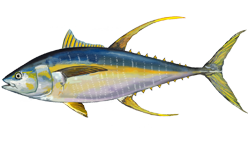
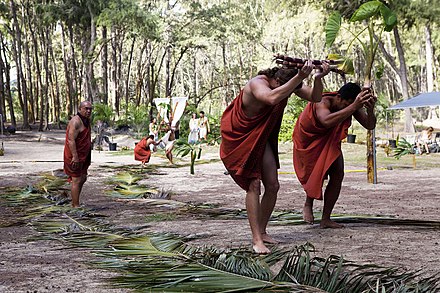
Source: Western Pacific Regional Fishery Management Council. (n.d.). Hawaiian Moon Phases and Traditional Resource Management. https://www.wpcouncil.org/wp-content/uploads/2019/05/Indigenous_Display-1.pdf

